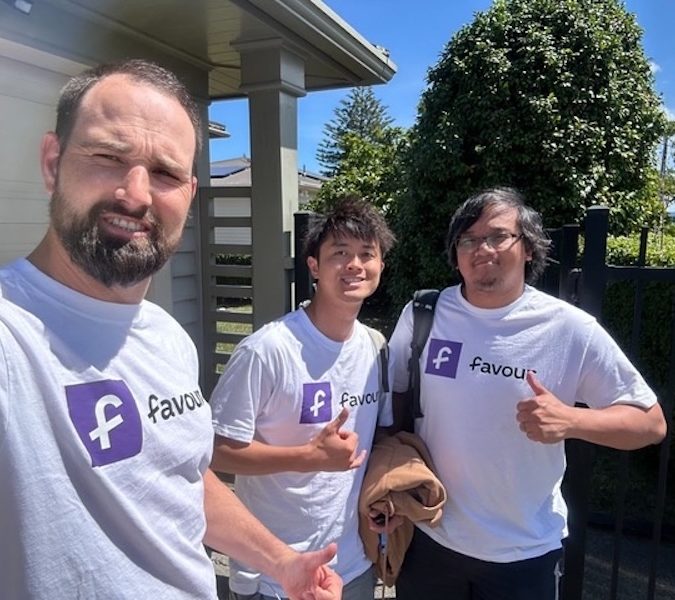A design discrepancy – why we need to promote diversity in creative leadership

OPINION: Back in the early noughties, I found myself reading a piece in the New Yorker by Malcom Gladwell about an anthropologist named Paco Underhill. The central idea stuck with me and I haven’t been able to shake it since. It talked about the importance of truly understanding people in order to connect with them on a human level — how their background, history, and values shape how they think, behave and who they are. This idea is one of the core things I love about design.
Design thrives on diverse perspectives, and without these unique voices in the conversation, we miss out on creating work that truly connects with the world.
This design world which I call home is also home to many other women – in fact, 60% of designers globally identify as female. Yet, only 29% hold creative leadership positions. Don’t get me wrong, this is much better than other industries who continue to lag behind in diversity (and we’ve come a long way in the last couple of decades) but there’s so much untapped potential in the countless women in design who are destined to lead from the front.
In the early days, I often found myself in very traditional, competitive, male-dominated environments (especially in London). My passion for design meant I was able to shrug off the subtle exclusions and dismissive looks but the bigger issue was the lack of women in the room – not to mention in leadership positions.
As I grew more confident in myself over the next 18 years, I began to notice a trend – the places where diverse perspectives were welcomed were the ones that truly thrived. This realisation became a guiding principle as I progressed in my career, shaping both where I chose to work and why – and how I nurture and grow the next generation of designers.
Diversity is the key
I couldn’t be more proud of the team we have built at Milk and strive to lead from the front as a role model for emerging talent. Each time we hire someone, it’s because of the specialty they bring as a whole person with their age, sexuality, gender, unique experiences, ideas, and skills enriching their working lives. Once they have their feet under the desk, we ensure they feel the psychological safety to show up as their authentic selves.
While the slow progress in this department is deeply rooted in history and imposter syndrome continues to run rampant, the importance of diversity in leadership cannot be overstated.
Design is all about connection. For example, emotional connection, empathy, and diverse thinking are natural strengths for women. We can leverage our EQ to shape more inclusive and innovative workplaces. I suspect that AI will also amplify the need for emotional intelligence in leadership, with diverse leaders in high demand.
Read more: Sitting down with Milk, the agency behind the BLUNT Umbrellas rebrand
Looking ahead to an inclusive future
My inkling is that the tides are changing with more and more diverse leaders being recognised for their contribution to the industry. Now, there are many super talented women in New Zealand running their own studios, which is amazing. They can set an example for others and achieve the balance that the industry craves. I’m excited to see the larger studios continue to follow suit.
True representation comes from a conscious commitment to inclusivity, ensuring there are not only diverse role models but mentorship and professional development opportunities too.
What does this look like? Offer support programmes, flexible working policies, mentorship programs and comprehensive parental leave. Revisit professional development processes and think about if they’re tailored for what your team needs to grow. Promote great existing advocacy groups to the emerging talent in your team, such as opportunities from Toi Manahau The Designers Institute, or events from the Design Assembly’s Women in Design.
We can look to many role models pioneering what it means to be a woman in design, from Paula Scher to Jessica Hische. Plus, you can be a leader at any career stage – take our intermediate designer, Harriet (aged 22), who recently spoke at her old AUT class as a perfect example.
For my agency neighbours, a strong incentive to promote inclusivity is that clients want to see diverse leaders in the room. We recently pitched for a new business run by two young men, with a product specifically targeted at men. Part of the reason we won the job was because they appreciated having a woman on the lead team, offering a perspective they knew would be valuable to the overall outcome. So I believe clients and businesses will help drive change as well.
I’m feeling hopeful that we can get there. For myself and many other fellow designers of my generation, the feeling of needing to work harder, longer, and prove ourselves in our careers will be in our bones for a long time. But for a whole new generation of talented creatives, and generations to come, the barriers that I once thought were unscalable crumble faster each day.




